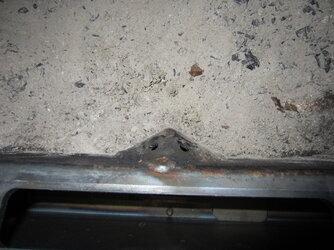jzinckgra
Feeling the Heat
Not sure, but jotul manual says to place at one of the two corners of plate. optimal combustion is 400-700F.I see you have your stove top thermometer in the corner. What does it read at the center? I get about a 100 degree difference between those two spots.
I would pay more attention to your flue temp. Try this, rake your coals forward, reload firebox, burn on high til you reach 400 flue temp, adjust to medium and let flue temp climb to 600, set air to medium low and watch flue temp and see if it settles in between 400-600 flue temp if not adjust air accordingly.


